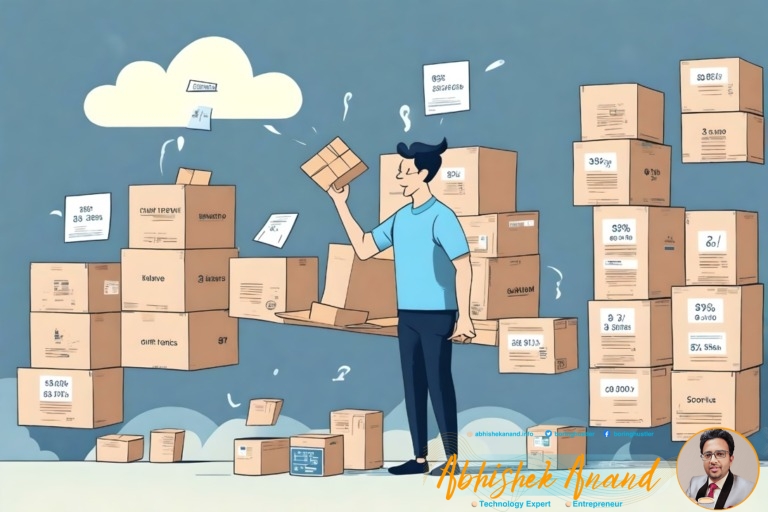Managing subscription billing for SaaS companies is a crucial aspect of business operations. As more and more companies are moving towards subscription-based models, it has become essential to ensure that the billing processes are streamlined and efficient. This requires a deep understanding of customer retention, pricing strategies, churn rates, security and compliance, as well as revenue monitoring.
One of the critical components of managing subscription billing is understanding customer retention. The ability to retain customers over time is imperative for any SaaS company’s success. It is important to analyze factors such as customer satisfaction levels and reasons for cancellations or non-renewals to identify areas where improvements can be made. Pricing strategies also play an essential role in retaining customers, and it is necessary to find a balance between maximizing revenue and ensuring that prices are reasonable for customers. Additionally, streamlining subscription billing processes can help reduce errors and improve customer experience by making it easier for them to manage their subscriptions.
Overview of Subscription Billing for SaaS Companies
Subscription billing for SaaS companies involves the practice of automating recurring payments and managing customer subscriptions. This process is crucial for businesses that offer software as a service, as it allows them to generate predictable revenue streams and maintain long-term relationships with their customers. Subscription pricing models are an essential component of subscription billing, as they determine how much customers will pay and what features they will have access to.
There are several different subscription pricing models that SaaS companies can use, including flat-rate pricing, usage-based pricing, tiered pricing, and value-based pricing. Flat-rate pricing involves charging customers a fixed fee for access to all features of the software. Usage-based pricing charges customers based on how much they use the software or how many users they have. Tiered pricing offers different levels of access at different price points, while value-based pricing charges customers based on the perceived value of the software.
Billing automation is another critical aspect of subscription billing for SaaS companies. Automating recurring payments ensures that customers are billed accurately and consistently each month without requiring manual intervention from staff members. This not only saves time but also reduces errors in billing and improves customer satisfaction by providing a seamless payment experience. Understanding customer retention is also crucial in managing subscription billing for SaaS companies since it helps businesses identify which customers are likely to churn and take proactive steps to retain them before it’s too late.

Understanding Customer Retention
The longevity of a customer’s relationship with a business is crucial to its success, as it can directly impact the company’s revenue and overall growth. Customer retention refers to the ability of a business to retain their customers over a period of time through effective engagement strategies. The longer a customer stays loyal to a SaaS company, the more they will spend on products or services, which in turn leads to increased profits for the company.
Customer engagement is key when it comes to retaining customers. It involves building relationships with customers by providing them with valuable information that aligns with their needs and interests. This can be done through personalized communication channels such as email marketing, social media outreach, or even chatbots. Additionally, loyalty programs are another effective way to keep customers engaged and satisfied. By rewarding loyal customers with discounts or exclusive offers, businesses can incentivize their existing customer base while also attracting new ones.
Moving forward in managing subscription billing for SaaS companies involves exploring pricing strategies that align with customer retention goals. By offering flexible pricing plans that cater to different types of users according to their needs and budget, businesses can increase the likelihood of retaining them over time. Furthermore, implementing usage-based billing models where customers only pay for what they use can lead to higher satisfaction rates among users who may not require all features at once but still want access occasionally. Ultimately, understanding how pricing strategies affect customer behavior is essential in creating long-term relationships that benefit both parties involved.
Pricing Strategies
One critical aspect of customer retention for businesses is the implementation of effective pricing strategies that cater to different user needs and budgets. Dynamic pricing, which involves adjusting prices based on market demand and other factors, can be an effective way to increase revenue while also providing customers with a more personalized experience. For example, airlines often use dynamic pricing to adjust ticket prices based on factors such as time of day, seasonality, and availability.
Another approach to pricing is value-based pricing, which involves setting prices based on the perceived value that a product or service provides to customers. This strategy requires a deep understanding of customer needs and preferences in order to accurately assess the value proposition of a product or service. By aligning price with perceived value, companies can create a more compelling offering that resonates with their target audience.
Effective pricing strategies are essential for managing subscription billing for SaaS companies. By implementing dynamic pricing and/or value-based pricing approaches, businesses can better cater to the diverse needs and budgets of their customers while also increasing revenue. However, even with these strategies in place, churn rates remain an important metric for measuring customer retention over time.
Churn Rates
In order to effectively manage a SaaS company’s subscription billing, it is crucial to understand and monitor churn rates. Churn rate refers to the percentage of customers who cancel their subscription within a given time frame. By analyzing churn rates, companies can identify potential issues with their product or service that may be causing customers to leave and develop strategies for reducing churn rates. This discussion will explore the importance of understanding churn rates and provide strategic approaches for reducing them in order to increase customer retention and revenue growth.
Understanding Churn Rates
Understanding churn rates is a crucial aspect of managing subscription billing for SaaS companies as it allows them to identify when customers are leaving and why. Churn prevention is an essential strategy in retaining customers, and it requires in-depth understanding of customer behavior. By analyzing the reasons behind customer attrition, SaaS companies can implement corrective measures to minimize churn rates and increase revenue.
Churn rates represent the percentage of subscribers who cancel their subscriptions within a given period. High churn rates can signal problems with the product or service offering, pricing strategy, or customer support. Analyzing factors that lead to high churn rates provides valuable insights into how SaaS companies can improve their offerings and retain more customers over time. Therefore, understanding what causes customers to leave and implementing strategies to reduce churn rate should be a priority for any SaaS company looking to succeed in today’s competitive market.
Strategies for Reducing Churn Rates
Implementing effective strategies to reduce churn rates is crucial for SaaS providers who seek to retain a loyal customer base and maximize revenue growth. Churn prevention and retention strategies can help businesses keep their customers engaged and satisfied, thereby reducing the number of customers who cancel their subscriptions.
One strategy that SaaS companies can use to reduce churn rates is by improving customer experience. This can be achieved through regular communication with customers, providing excellent customer service, offering personalized recommendations, and addressing any issues or concerns that customers may have promptly. Additionally, offering incentives such as discounts or free trials can encourage customers to continue using the product or service. Another effective strategy is to monitor usage patterns and identify users who may be at risk of churning. By proactively reaching out to these users with targeted messaging or offers, businesses can increase engagement and prevent cancellations.
Reducing churn rates is just one aspect of managing subscription billing for SaaS companies. Streamlining subscription billing processes is another critical component that can improve revenue growth and customer satisfaction.

Streamlining Subscription Billing Processes
Optimizing subscription billing processes within saas companies is crucial for improving efficiency and maintaining customer satisfaction. One of the most effective ways to streamline subscription billing processes is through automated invoicing. Automated invoicing enables saas companies to generate invoices automatically, reducing manual errors and saving time. Furthermore, it can help businesses capture more revenue by sending out timely reminders for payment.
Another important aspect of streamlining subscription billing processes is implementing reliable payment gateways. Payment gateways are essential for securely processing customer payments and ensuring that payments are made on time. An efficient payment gateway should support multiple payment options, have a high level of security, offer instant confirmation of transactions and provide detailed transaction reports.
Optimizing subscription billing processes through automated invoicing and reliable payment gateways can significantly improve a saas company’s efficiency while enhancing customer satisfaction. The next section will explore how transparency in billing can further enhance these benefits.
Billing Transparency
Billing transparency is an essential factor in maintaining a healthy relationship between a business and its customers. It involves providing clear, concise, and accurate information on all billing statements. The importance of billing transparency lies in the fact that it helps to build trust with customers by ensuring they are fully aware of what they are paying for and why.
Importance of Billing Transparency
Transparency in subscription billing is a key element to building trust with customers, as the adage goes: ‘honesty is the best policy.’ Billing transparency benefits both the customer and the company. Customers are more likely to remain loyal when they feel that they can trust a company’s billing practices. On the other hand, companies benefit from increased customer retention rates and positive word-of-mouth advertising.
To evoke an emotional response in the audience, consider these three points:
Imagine receiving a bill that you don’t understand or that contains hidden fees. How would you feel?
Now imagine receiving a clear and concise bill that explains all charges upfront. How does this make you feel?
Finally, think about how important it is for customers to trust their service providers, especially when it comes to financial matters.
Providing clear billing statements is another crucial aspect of managing subscription billing for SaaS companies.
Providing Clear Billing Statements
Clear billing statements are crucial for customers to understand their expenses and feel confident in their financial transactions with a company. Customers have clarity expectations when it comes to subscription billing, as they want to know exactly what they are paying for and why. By providing clear billing statements, saas companies can ensure that customers understand what services they are being charged for, how much they cost, and when payments are due.
In addition to meeting customer expectations for clarity, clear billing statements also help establish effective communication channels between the saas company and its customers. These statements allow the company to provide transparency into its pricing structure and any changes or updates that may affect the customer’s bill. This level of transparency fosters trust between the saas company and its customers by demonstrating a commitment to open communication about financial matters. Ultimately, this can lead to increased satisfaction among customers who feel informed and empowered throughout their subscription experience. With clear billing statements in place, saas companies can move on to effectively managing payment collection from their subscribers.

Payment Collection
Effective payment collection methods are crucial for the financial stability of SaaS companies. Automated payment systems have become increasingly common in the industry, allowing for faster and more accurate billing processes. By automating payment collection, SaaS companies can reduce errors and potential fraud, as well as improve customer satisfaction by providing a seamless payment experience.
One important aspect of automated payment collection is integrating with a reliable payment gateway provider. A payment gateway acts as a mediator between the company’s website or application and the customer’s bank account or credit card company. It securely processes transactions, verifies funds availability, and ensures that payments are properly credited to the correct accounts. A robust payment gateway integration should include multiple layers of security protocols to protect sensitive financial information from breaches or unauthorized access.
Moreover, implementing effective payment collection strategies can also help ensure timely subscription renewals. By setting up automatic subscription renewal options and sending out reminders in advance of expiration dates, SaaS companies can reduce churn rates and maintain steady revenue streams. Additionally, providing customers with easy-to-use self-service portals where they can update their billing information or make changes to their subscriptions can improve overall customer satisfaction levels. Ultimately, managing subscription billing requires careful attention to detail and consideration for both business needs and customer preferences.
Subscription Renewals
Maximizing revenue through timely subscription renewals is a critical concern for businesses providing ongoing services. To achieve this, companies must develop effective renewal strategies that focus on customer engagement and retention. One of the most important aspects of subscription renewal is creating a sense of urgency among customers to renew their subscriptions before they expire.
To ensure successful subscription renewals, companies must engage with their customers throughout the entire subscription lifecycle. This includes sending reminders and notifications about upcoming renewals, as well as offering incentives to encourage customers to renew early. In addition, it is essential that businesses provide excellent customer service to address any concerns or issues that may arise during the renewal process.
Managing subscription renewals requires careful planning and execution. By developing effective renewal strategies and maintaining strong customer engagement throughout the subscription lifecycle, businesses can maximize revenue while ensuring long-term customer loyalty. The next section will discuss how providing exceptional customer support can further enhance subscriber satisfaction and retention.
Customer Support
Providing exceptional customer support is a crucial aspect of maintaining long-term subscriber satisfaction and retention in businesses offering ongoing services. In the SaaS industry, where customers are paying for subscriptions on a regular basis, it is even more important to have a solid customer support system in place. One key strategy to ensure effective support is training staff appropriately. This includes not only educating them on the product but also providing them with communication skills necessary for handling customer inquiries and complaints.
Another important element of customer support is implementing various communication methods that cater to different customers’ preferences. Some may prefer email or chat, while others may prefer phone calls or social media messaging. It’s essential to have multiple channels available for customers to reach out and receive timely responses from customer service representatives who can address their concerns effectively.
Overall, prioritizing high-quality customer support can lead to increased subscriber satisfaction and retention rates in SaaS companies. Training staff adequately and providing effective communication methods help ensure that subscribers feel valued and heard throughout their subscription journey.
Transitioning into the next section about data analysis, understanding how your company’s subscribers interact with your product through analyzing data can provide valuable insights into improving customer support strategies further.
Data Analysis
Data analysis is a critical tool that enables businesses to gain insights into their subscribers’ behavior and preferences, which can inform decision-making processes and ultimately lead to improved customer satisfaction. Through data analysis, SaaS companies are able to identify trends, patterns, and anomalies in subscriber behavior that may not be immediately apparent otherwise. This information can then be used to optimize pricing strategies, improve product offerings, and enhance the overall customer experience.
One way in which SaaS companies can utilize data analysis is through data visualization. By presenting complex data sets in a visual format, businesses are able to quickly identify key takeaways and make informed decisions based on the information presented. This type of analysis can also aid in identifying areas for improvement or optimization within subscription models.
Another application of data analysis for SaaS companies is predictive modeling. By utilizing historical subscriber data, companies are able to make predictions about future behavior and use this information to optimize pricing strategies or tailor product offerings. Predictive modeling allows businesses to stay ahead of trends and anticipate changes in subscriber behavior before they occur.
Incorporating both data visualization and predictive modeling into their business practices allows SaaS companies to make strategic decisions based on accurate insights derived from subscriber activity. The next step after analyzing this information is using it effectively towards upselling and cross-selling strategies without any delay.
Upselling and Cross-Selling
The Subtopic of Upselling and Cross-Selling in the context of subscription billing for SAAS companies is a crucial area to explore. This discussion will examine the strategies employed by these companies to maximize revenue through upselling and cross-selling. Additionally, it will highlight the many benefits that can be derived from implementing these practices, including increased customer satisfaction and retention rates, as well as improved profitability.
Strategies for Upselling and Cross-Selling
One effective approach to increasing revenue for SaaS companies is through the implementation of well-planned upselling and cross-selling strategies. Effective communication is key when it comes to convincing existing customers to upgrade their subscription or add more features. Personalized recommendations, based on each customer’s usage patterns and needs, can also be a powerful tool in convincing them to make additional purchases.
To successfully implement an upselling and cross-selling strategy, SaaS companies must first understand their customers’ behavior and preferences. This involves analyzing data such as usage statistics, customer feedback, and purchasing history. Once this information has been gathered, companies can then craft targeted offers that are highly relevant to each individual customer. Some effective strategies for achieving this include offering discounts on complementary products or services, introducing new features that solve specific pain points identified by customers, and providing personalized product recommendations based on past behavior.
By implementing these strategies effectively, SaaS companies can not only increase revenue but also improve customer satisfaction by providing them with products that meet their unique needs. In the next section, we will explore the various benefits of upselling and cross-selling in more detail.
Benefits of Upselling and Cross-Selling
One effective way of increasing revenue for SaaS companies is by implementing upselling and cross-selling strategies. These techniques allow businesses to offer additional products or services to their existing customers, thereby increasing the value of each customer. Upselling refers to offering a higher-priced product or service that complements the original purchase, while cross-selling involves offering related products or services from different categories. By doing so, companies can not only increase revenue but also improve customer satisfaction by providing them with more comprehensive solutions.
The benefits of upselling and cross-selling are clear: they help businesses generate more revenue without acquiring new customers, which is often more expensive than retaining existing ones. According to research, it costs five times as much to acquire a new customer as it does to retain an existing one. Thus, upselling and cross-selling can be an effective way for SaaS companies to grow their business sustainably over time. Furthermore, these strategies can enhance customer satisfaction by providing them with additional value and addressing their evolving needs. By incorporating these tactics into subscription billing management practices, SaaS companies can achieve both financial success and customer loyalty simultaneously. Moving forward into the next section about security and compliance, it’s important for SaaS companies to prioritize protecting their customers’ data while maintaining compliance with regulations in order to build trust and maintain long-term relationships with clients.

Security and Compliance
Ensuring security and compliance in managing subscription billing for SaaS companies is of utmost importance, as it involves handling sensitive customer data and financial transactions. Compliance standards must be met to ensure that the company is adhering to legal requirements and industry regulations. Payment security measures must also be implemented to protect against fraud, hacking, and other forms of cybercrime.
To meet compliance standards, SaaS companies must have a thorough understanding of the laws and regulations that apply to their business. This includes data protection laws such as GDPR or CCPA, as well as industry-specific regulations such as PCI DSS for payment processing. Companies should also implement internal policies and procedures to ensure that they are meeting these standards on an ongoing basis.
Payment security is another critical aspect of managing subscription billing for SaaS companies. This involves implementing measures such as encryption, tokenization, and two-factor authentication to protect against unauthorized access or theft of sensitive financial information. By prioritizing both compliance standards and payment security measures, SaaS companies can build trust with their customers while protecting themselves from potential legal or financial repercussions.
As important as ensuring security and compliance is monitoring revenue generated by subscriptions. By keeping track of revenue streams in real-time through analytics tools like Google Analytics or Mixpanel, businesses can identify trends in customer behavior that may impact future sales strategies. Additionally, tracking revenue allows businesses to make informed decisions about pricing models based on customer demand patterns over time without compromising on security or compliance standards.
Monitoring Revenue
Monitoring revenue is a crucial task for any SaaS company. It provides insights into the financial health of the organization and helps identify potential areas for growth or improvement. Analyzing revenue trends allows companies to make strategic decisions regarding pricing, product offerings, and customer acquisition. By tracking revenue consistently and regularly, businesses can adapt quickly to changes in the market and maintain long-term sustainability.
Importance of Monitoring Revenue
Effective management of subscription billing for SaaS companies requires a keen focus on tracking and analyzing revenue streams to ensure sustainable growth and long-term success. Tracking metrics can provide valuable insights into the performance of a company’s subscription business model, allowing them to identify areas in need of improvement and make data-driven decisions about pricing strategies, product offerings, and customer acquisition tactics. Revenue forecasting is another critical component of effective revenue monitoring, enabling businesses to anticipate future trends and adjust their strategies accordingly.
To effectively monitor revenue streams, SaaS companies should consider implementing the following practices:
Utilizing key metrics such as monthly recurring revenue (MRR), annual recurring revenue (ARR), churn rate, customer lifetime value (CLV), and customer acquisition cost (CAC) to track the health of their subscription business.
Conducting regular revenue forecasts based on historical data trends and market analysis to develop realistic growth targets and assess progress towards achieving them.
By closely monitoring these metrics and regularly forecasting revenue trends, SaaS companies can gain a comprehensive understanding of their subscription business’s financial health. This information allows them to make informed decisions about how best to allocate resources towards achieving long-term profitability. In the next section, we will explore the importance of analyzing these revenue trends in further detail.
Analyzing Revenue Trends
Analyzing the fluctuations in revenue streams is an important aspect of managing subscription billing for SaaS companies. By identifying patterns in revenue trends, businesses can gain valuable insights into the market demand and adjust their strategies accordingly. For example, if a company notices a consistent increase or decrease in its monthly revenue, it can investigate the cause and make necessary changes to retain customers or attract new ones.
Forecasting future revenue is another critical element of analyzing revenue trends. Businesses should use historical data to predict future sales and plan for growth accordingly. This analysis helps companies understand when they need to invest more resources or scale back operations to maintain profitability. Accurate forecasting also allows businesses to set realistic goals and measure progress towards achieving them over time. Overall, continuous monitoring of revenue trends is essential for making informed decisions that lead to long-term success and sustainable growth in the highly competitive SaaS industry.
Continuous Improvement
Optimizing subscription billing processes through regular updates and revisions is essential for saas companies to maintain their competitive edge and meet the evolving needs of their customers. Continuous improvement allows saas companies to address any issues that may arise in the subscription billing process, making it more efficient and seamless for their customers.
An iterative approach is crucial in achieving continuous improvement. Saas companies must continuously collect feedback from customers and analyze data on revenue trends to identify areas where they need to improve. This information can then be used to make changes or updates to the billing system, which will ultimately lead to increased customer satisfaction and retention.
Saas companies should also prioritize automating as many aspects of the subscription billing process as possible, such as payment collection, invoicing, and account management. By automating these tasks, saas companies can reduce human error while improving efficiency. Additionally, automation frees up resources that can be allocated towards other strategic initiatives aimed at improving the overall customer experience.
Conclusion
In conclusion, managing subscription billing for SaaS companies requires a strategic approach that prioritizes customer retention and revenue growth. Pricing strategies must be carefully crafted to attract and retain customers while ensuring profitability. Churn rates should be continuously monitored to identify potential issues and implement solutions promptly.
Streamlining subscription billing processes can significantly improve the customer experience and reduce churn rates. Upselling and cross-selling opportunities should also be leveraged to increase revenue from existing customers. Security and compliance must be top of mind to protect both the company’s reputation and customers’ sensitive information.
Monitoring revenue is crucial to identifying which pricing strategies are working well and where improvements can be made. Continuous improvement through data analysis, feedback from customers, and industry trends will ensure that SaaS companies remain competitive in a rapidly evolving market. Overall, managing subscription billing for SaaS companies requires a comprehensive understanding of customer needs, pricing strategies, security measures, revenue growth, and continuous improvement processes.

